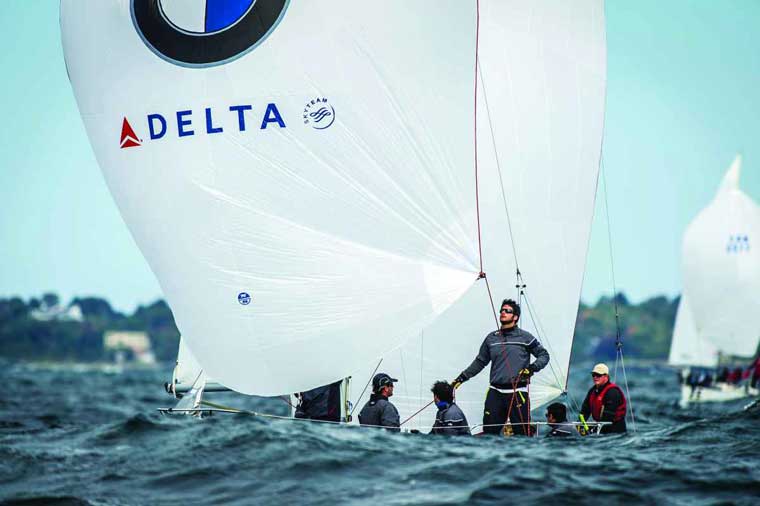A post from Mike Ingham in Sailing World

In run mode, wind flows vertically in the spinnaker, entering near the head and exiting from the foot. Photo by Paul Todd/Outside Images.
In the previous issue we visited Cornell University’s wind tunnel to see how wind flows around an asymmetric spinnaker. We learned a lot, of course, especially the importance of being dynamic with our trim, so we went back to the tunnel to explore some key points of symmetric spinnaker flow and trim.
Before stepping into the tunnel, I had a naïve vision of attached flow on both sides of the spinnaker. What I quickly discovered, instead, was that the smoke showed large areas of stagnation and early flow separation. Thinking our 3D printed plastic test spinnaker was too rigid, or its shape flawed, we went out and placed telltales on my J/24 spinnaker. Our real-world tests confirmed our wind-tunnel findings: The flow is there, but it’s less than ideal. The difficulty in getting flow to go the way we want, and keeping it attached as long as possible, emphasizes how important and attentive trimming really is.